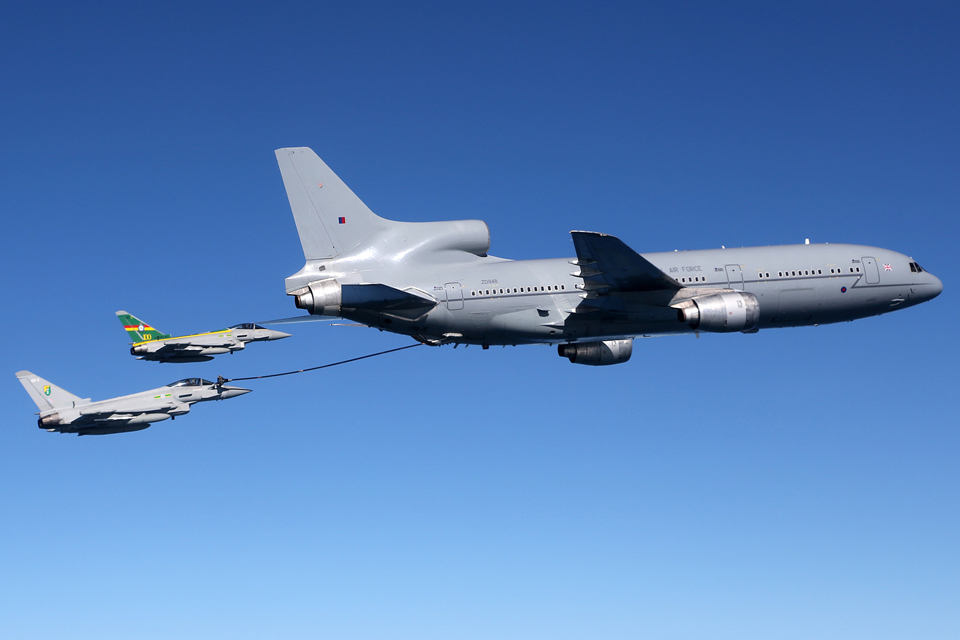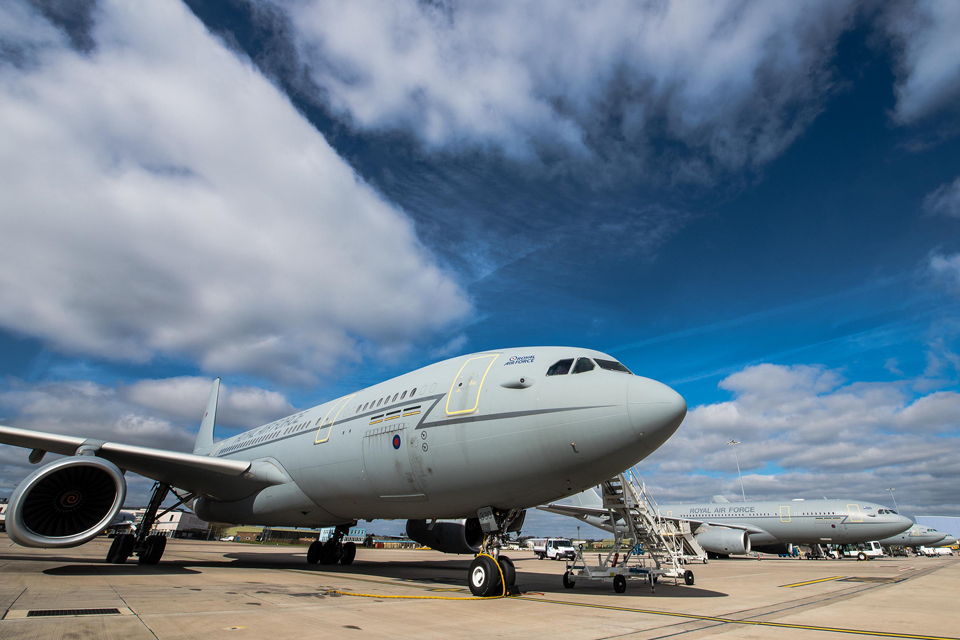TriStar retires after 30 years' service
The Lockheed TriStar has flown its last operational mission with the Royal Air Force.

216 Squadron personnel with a TriStar aircraft at RAF Brize Norton [Picture: Squadron Leader Dylan Eklund, Crown copyright]
On 24 March, 2 TriStars of 216 Squadron based at RAF Brize Norton flew an air-to-air refuelling mission over the North Sea before one of them conducted flypasts at airfields associated with its history.
During its service, the TriStar, fondly known as ‘Timmy’ by its crews, has formed the backbone of long range air transport and air-to-air refuelling, participating in nearly every British conflict since it was brought into service.
The fleet of 9 aircraft were acquired as a direct result of the Falklands conflict and the need to provide support to forces in the South Atlantic and to bolster the air-to-air refuelling fleet.
In more recent times TriStars have provided air-to-air refuelling for fast jet aircraft operating over Afghanistan and Libya, and provided a vital airbridge, transporting troops and cargo to Iraq and Afghanistan.

An RAF Typhoon is refuelled by a TriStar over the North Sea [Picture: Squadron Leader Dylan Eklund, Crown copyright]
Over a period of 8 years, 216 Squadron has flown to Afghanistan 1,642 times, carrying 250,000 passengers each way and travelling a total distance equivalent to flying around the world 640 times.
Philip Dunne, Minister for Defence Equipment, Support and Technology, said:
TriStar has served the RAF for 30 years and today is an opportunity to celebrate its long and distinguished career.
Providing vital support, TriStar has carried over 250,000 troops as well as battle-winning supplies to our personnel wherever they are in the world. It also carried out vital air-to-air refuelling of our front line combat aircraft at home and on deployed operations.
Its replacement, Voyager, is testament to our commitment to provide state-of-the-art transport and refuelling capability for our armed forces. Capable of carrying more, for longer, it has already begun flights to Afghanistan and will also refuel our front line combat aircraft for decades to come.

The Royal Air Force's new Voyager aircraft [Picture: Steve Lympany, Crown copyright]
Speaking on the last operational mission of the TriStar, Officer Commanding 216 Squadron, Wing Commander Peter Morgan, said:
For us this is a very sad occasion. We’ve been very proud of the TriStar over the past 30 years where it’s been involved in nearly every operation in both the air transport and air-to-air refuelling roles.
Pretty much everyone in the military has been in a TriStar and after 30 years all the aircraft are still in service; it has an impeccable safety record and is working to the very end of its career.
The TriStar’s duties have been taken over by the Voyager which now provides state-of-the-art air-to-air refuelling in support of the Quick Reaction Force that protects UK and Falkland Islands air space 365-days-a-year.
The remaining 4 TriStar aircraft will leave RAF Brize Norton for the final time today, 25 March, to travel to Bruntingthorpe Airfield in Leicestershire for disposal.